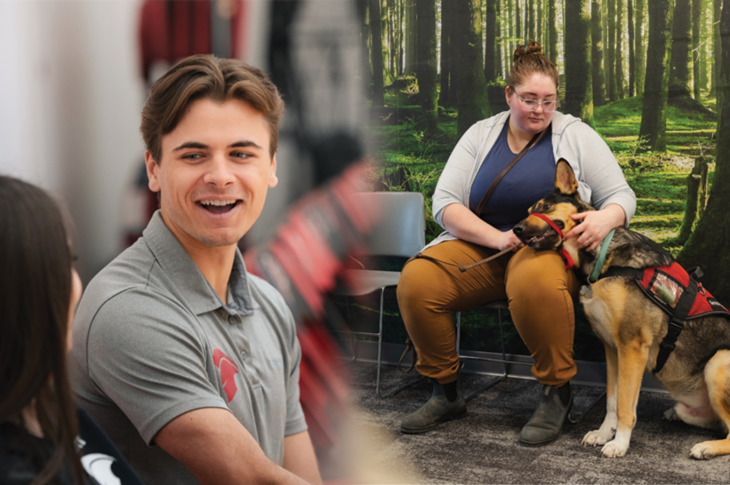Donor support eases burdens and creates safe spaces

Every day, SAIT students encounter the positive impacts of donor support. Many students face barriers that can prevent them from reaching their educational goals — these barriers can be financial, emotional or physical. Thanks to SAIT’s donor family, these barriers can be removed and the students facing them can feel empowered by this generosity.
Student awards have the power to inspire and motivate recipients. The benefits go beyond the monetary value — students feel a sense of recognition and validation that their hard work has paid off and that they are on the right track with their educational decisions. In 2025, SAIT provided $5.3 million in student awards.
Second-year Bachelor of Business Administration student and SAIT Trojans men’s hockey captain Zach Cain knows the impact these awards can have on students like himself, especially those who move to SAIT from out of province.
“There’s a big financial burden that comes with going to school,” he says. “So, everything helps. Receiving scholarships and awards means a lot, eases that burden and allows you to focus on studies and sports. Moving away from home and having to pay for rent and food for the first time makes you realize those expenses add up, and to get your groceries or something like that covered is huge.”
Thanks to donor support, Cain can enjoy the benefits of playing the game he loves while pursuing his education.
“Being able to manage studies and athletics has been a good test for the real world and having to manage priorities.”
Safe spaces
SAIT strives to create an inclusive, welcoming and accommodating learning environment for every type of person and mind. Support from donors helped create the first Sensory Calming Room on campus, a space that gives students a private and safe environment to self-regulate when feeling overstimulated. For second-year Mechanical Engineering Technology student Rachel Kostynuk, the Sensory Calming Room is a place to quiet her mind.
“This space becomes a place where I can reregulate my mind and body,” shares Kostynuk. “Test taking is extremely anxiety-inducing, so by coming here, I have this space where I can sit, calm down and be able to quiet my mind. I’m able to focus on the rest of the day and go to class, study, and do my next test.”
Prior to the Sensory Calming Room, Kostynuk had little choice about where to go to achieve this calm.
“The only place where I was really able to do this was the bathroom. I would lock myself in one of the stalls and try to calm myself down because that was the only space where I was secluded and away from the masses of people. But this room now means I don’t have to hide in the bathroom. I can have a space dedicated to people like me.”
Thank you to each member of our donor community. Your generosity enables the success of students like Zach and Rachael and ensures SAIT is a place where all can learn and achieve their goals.
Learn more about the impact donors made at SAIT this past year.
Tomorrow’s talent, today
The Real Futures campaign will enable SAIT to deliver on the promise to transform who, how and what we teach in response to the changes unfolding across our communities, technologies and economies. With a fundraising target of $150 million, the campaign will assure SAIT’s continued ability to provide the training and skills that industry needs to stay relevant and that students need to thrive, whatever vision of tomorrow they’re working toward.
Real Futures
Oki, Âba wathtech, Danit'ada, Tawnshi, Hello.
SAIT is located on the traditional territories of the Niitsitapi (Blackfoot) and the people of Treaty 7 which includes the Siksika, the Piikani, the Kainai, the Tsuut’ina and the Îyârhe Nakoda of Bearspaw, Chiniki and Goodstoney.
We are situated in an area the Blackfoot tribes traditionally called Moh’kinsstis, where the Bow River meets the Elbow River. We now call it the city of Calgary, which is also home to the Métis Nation of Alberta.